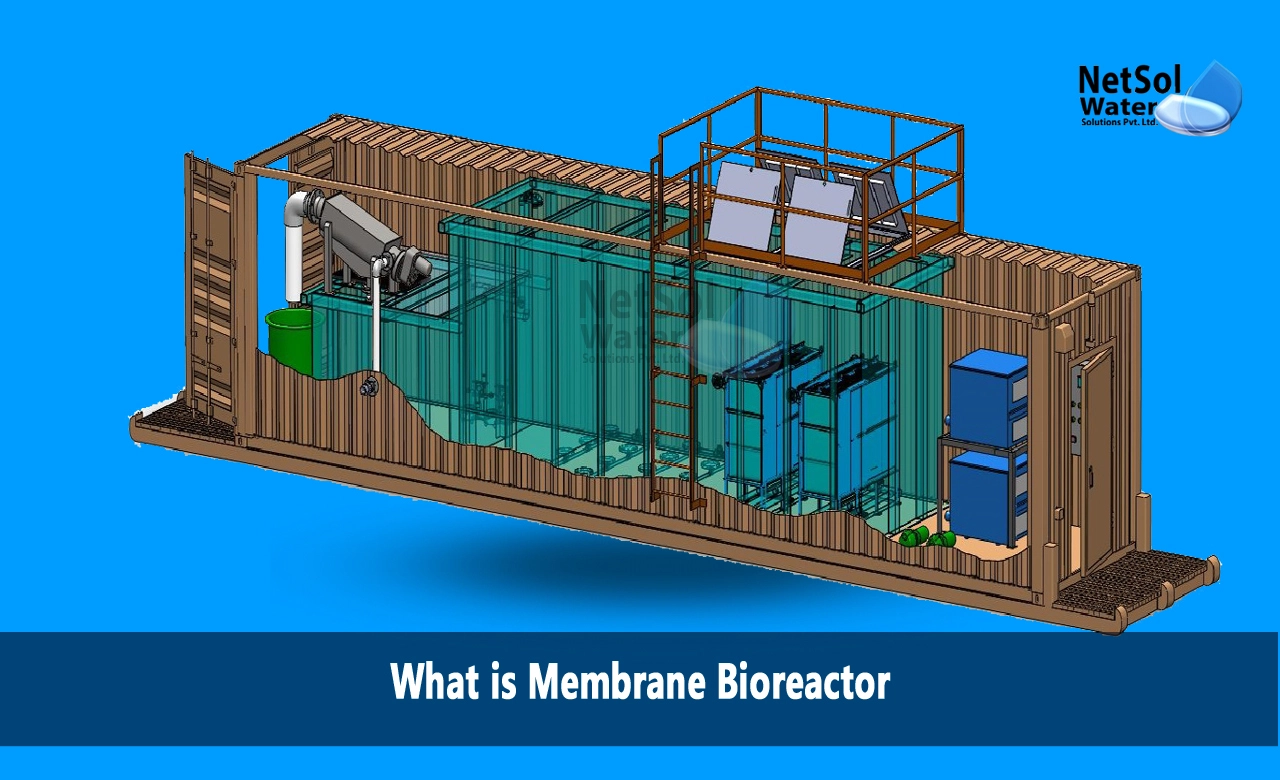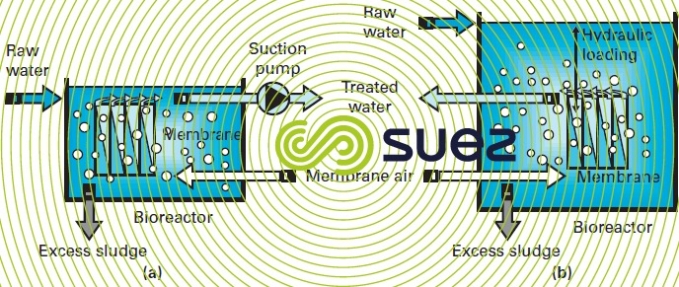Membrane Bioreactor Systems: A Key Technology for Water Reuse and Recycling
Membrane Bioreactor Systems: A Key Technology for Water Reuse and Recycling
Blog Article
Exactly How Membrane Bioreactors Are Changing Water Filtration Equipments
The development of membrane bioreactors (MBRs) stands for a considerable innovation in the area of water purification, combining organic treatment procedures with innovative membrane filtration modern technologies. This combination not only improves the top quality of dealt with effluent however likewise addresses metropolitan room constraints, making MBRs specifically appropriate for densely booming locations. As global water scarcity intensifies, the duty of MBRs in facilitating drinkable water reuse and lasting water management ends up being progressively critical. The effects of this technology extend beyond efficiency-- what opportunities and obstacles exist ahead for its prevalent implementation?
Introduction of Membrane Layer Bioreactors
Membrane layer bioreactors (MBRs) stand for a substantial development in water purification innovation, as they integrate biological therapy procedures with membrane layer filtration. This assimilation improves the efficiency of wastewater therapy by utilizing microorganisms to break down natural pollutants while concurrently using semi-permeable membranes to separate cured water from put on hold microorganisms and solids.
The MBR system usually contains an organic activator where the microbial populace metabolizes contaminants, complied with by a membrane filtration unit that preserves biomass and permits only tidy water to go through. This twin capability results in greater effluent top quality contrasted to conventional therapy approaches. MBRs can be operated in both set and constant flow settings, supplying flexibility in design and application.
They also allow the recuperation of water for reuse, hence contributing to water sustainability campaigns. Overall, MBRs are at the center of improving water therapy efficiency and top quality, showcasing the possibility for cutting-edge services in environmental management.
Advantages of MBR Modern Technology
The combination of organic therapy with membrane filtering offers various benefits for water filtration processes. Among the key advantages of Membrane layer Bioreactor (MBR) innovation is its capability to efficiently eliminate both not natural and organic contaminants, leading to high-grade effluent. The membrane layers serve as a physical barrier, preventing put on hold solids and virus from travelling through, which enhances the total security and integrity of cured water.
In addition, MBR systems call for a smaller sized impact contrasted to conventional therapy methods, permitting more effective room usage. This compact design is particularly advantageous in metropolitan settings where land is restricted. MBRs also demonstrate operational versatility, fitting differing influent top qualities and circulation rates without considerable efficiency deterioration.
In addition, the process provides improved nutrient elimination abilities, particularly for nitrogen and phosphorus, which are crucial for avoiding eutrophication in getting waters. The reduced sludge manufacturing connected with MBR modern technology likewise translates to reduce disposal expenses, making it a cost-efficient service in the lengthy run - Membrane Bioreactor. In general, the benefits of MBR innovation setting it as a leading choice for cutting-edge and sustainable water filtration systems, dealing with both environmental and financial problems
Applications in Water Filtration
Applications of Membrane Bioreactor (MBR) technology in water purification are impactful and varied, addressing numerous treatment requires across several industries. MBRs effectively integrate biological treatment processes with membrane layer purification, making them optimal for municipal wastewater therapy, industrial effluent administration, and even safe and clean water reuse campaigns.
In local setups, MBRs are increasingly employed to boost the high quality of treated wastewater, enabling conformity with strict discharge laws and helping with the recycling of water for irrigation and non-potable uses. Their small layout also makes them suitable for urban atmospheres where space is limited.
Industrially, MBR modern technology is utilized to treat process water and wastewater, particularly in industries such as pop over to these guys food and beverage, drugs, and textiles. By effectively getting rid of contaminants and suspended solids, MBRs help markets minimize ecological influences while recouping beneficial sources from wastewater streams.
Moreover, MBRs are acquiring grip in decentralized water treatment applications, where small-scale systems can be deployed in remote locations or creating regions. This adaptability makes it possible for neighborhoods to attain sustainable water administration options, enhancing access to tidy water while decreasing reliance on conventional therapy methods.
Study and Success Stories

In another example, a fabric production facility in Bangladesh took on MBR technology to address its wastewater obstacles. The system lowered chemical oxygen demand (COD) degrees from 1,200 mg/L to much less than 100 mg/L, hence fulfilling regulative criteria and significantly reducing ecological impact.
The University of Cape Community's MBR setup has actually proven reliable in dealing with greywater for non-potable reuse on university. This task not only saves potable water however likewise acts as an academic version for lasting practices.
Furthermore, a fish and shellfish handling plant in Norway used MBR innovation to treat effluents consisting of high degrees of raw material, achieving over 90% toxin elimination. These instance researches underscore MBR innovation's convenience and its crucial function in boosting water top quality across varied applications.
Future of Water Therapy Solutions
As international water scarcity and contamination challenges heighten, cutting-edge water therapy remedies are coming to be increasingly important to ensure lasting access to tidy water. The future of water therapy lies in the assimilation of innovative modern technologies that boost the effectiveness and performance of filtration procedures. Membrane layer bioreactors (MBRs) are at the leading edge of this advancement, incorporating organic treatment with membrane layer filtering to generate premium effluent ideal for various applications.

Arising patterns such as source healing from wastewater, including nutrients and power, will even more change treatment facilities into environment-friendly centers. Innovations in nanotechnology and look at more info membrane layer materials promise boosted performance and longevity of purification systems.

Final Thought
Finally, membrane bioreactors represent a substantial improvement in water filtration modern technologies, effectively combining biological treatment with sophisticated membrane filtration. The various benefits, including improved effluent high quality and decreased spatial needs, make MBRs particularly ideal for metropolitan applications. Their role in safe and clean water reuse and sustainable water monitoring highlights their significance in attending to worldwide water deficiency obstacles. Proceeded research and development will certainly even more boost the efficiency and adoption of MBR innovation, making certain a durable future for water treatment options.
The development of membrane bioreactors (MBRs) stands for a significant improvement in the area of water purification, combining organic treatment procedures with innovative article source membrane layer filtration technologies. As global water deficiency intensifies, the role of MBRs in helping with safe and clean water reuse and sustainable water administration becomes increasingly essential. They also make it possible for the recuperation of water for reuse, thus contributing to water sustainability efforts.As international water shortage and contamination challenges intensify, innovative water therapy solutions are ending up being progressively vital to make sure sustainable accessibility to tidy water. Their duty in safe and clean water reuse and lasting water administration highlights their importance in dealing with global water scarcity challenges.
Report this page